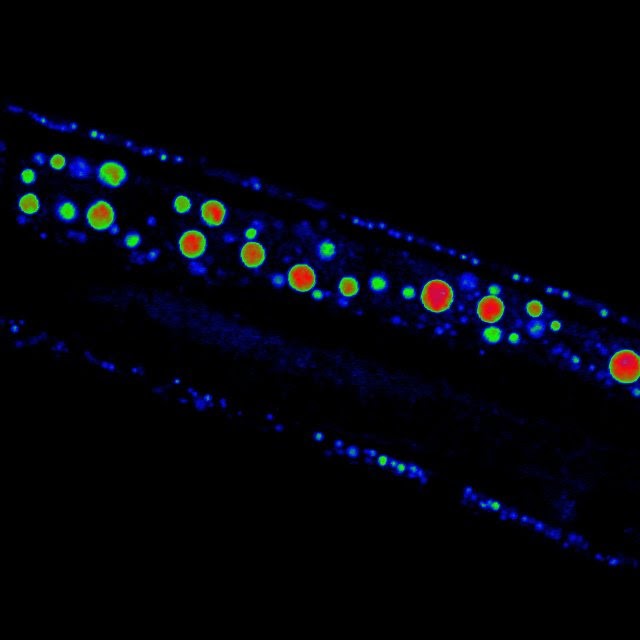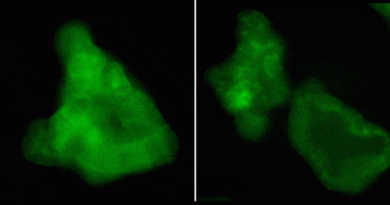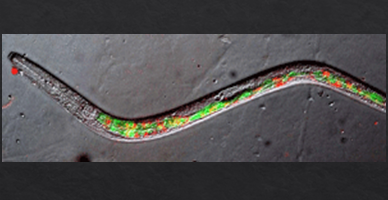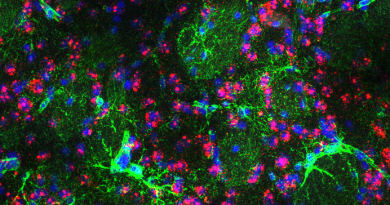Image of the Month: Lipid droplets in the transparent worm C. elegans

Meet Caenorhabditis elegans, a 1-millimeter-long, transparent, free-living roundworm that is the center of attention of many research laboratories around the world, including Dr. Meng Wang‘s lab at Baylor College of Medicine.
C. elegans is a simple organism that nonetheless shares essential characteristics with human biology. The worm starts its 2 to 3 week long lifespan as a single cell and follows a complex path of development to an adult form. It produces eggs and sperm, and it mates. It has a nervous system with a nerve ring that works as a ‘brain’ that allows C. elegans to display certain behaviors and even learn simple associations between stimuli and certain effects. For instance, it can learn smells that predict the presence or absence of food. After reproducing, it progressively ages, losses strength and health and dies. Growing in Petri dishes, feeding on bacteria, C. elegans provides ample opportunities to learn about connections between genes and embryogenesis, morphogenesis, development, nerve function, behavior, aging and other topics.
In the Wang lab,investigators are asking a number of biological questions to C. elegans:
- What are the roles of lipid metabolism in the regulation of longevity?
- How is reproductive homeostasis controlled during aging?
- How is the lipid dynamics during aging, as shown by quantitative label-free imaging?
- Which lipokines promote longevity and retard metabolic dysfunction and reproductive senescence?
Focusing on lipid metabolism, germline stem cell homeostasis and neuroendocrine regulation, the Wang lab goals include characterizing age-associated changes in endocrine organs, identifying their genetic causes and investigating their impacts on healthspan and lifespan. In addition, they are also interested in the interactions between the microbiome and lipid metabolism. In a recent pubication in Nature Cell Biology, they showed how microbes living inside C. elegans respond to environmental changes and generate signals to the worm that alter the way it stores lipids.

Dr. Meng Wang is an associate professor at the Huffington Center On Aging and of molecular and human genetics at Baylor College of Medicine.
To learn more about her research and lab activities, visit the Wang lab.



